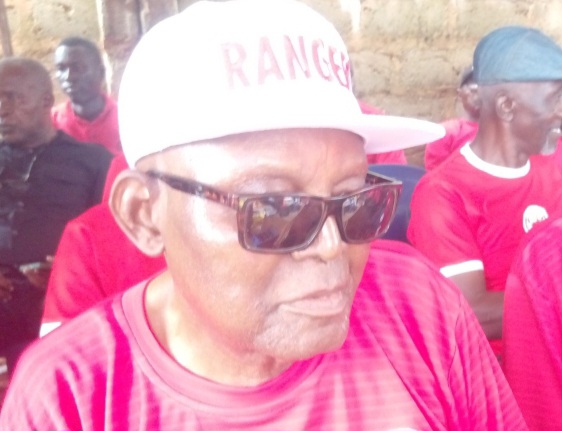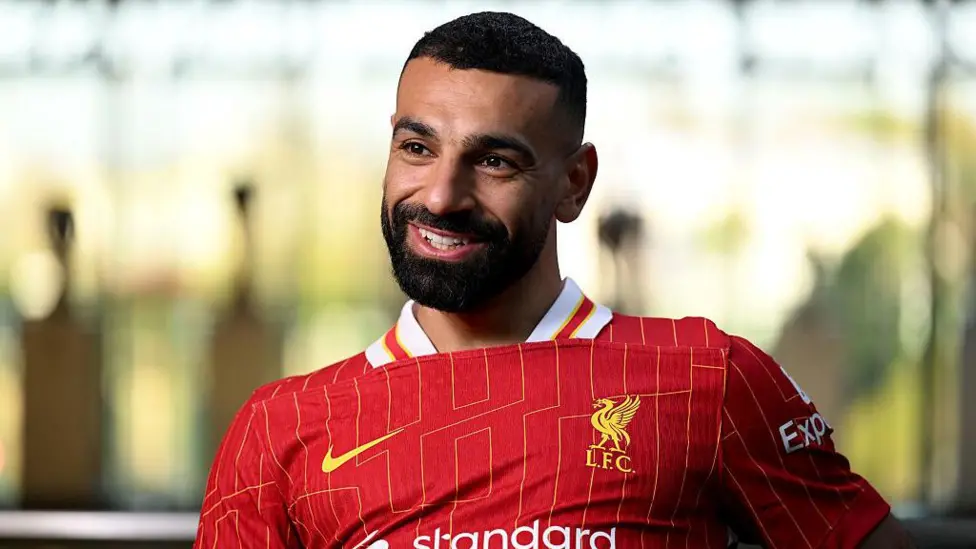
Liverpool – Luis Díaz bares his forearm and places a finger on his wrist, as if taking his own pulse. He does it without breaking eye contact, without pausing for breath. He does not seem to notice he is doing it. It is a reflexive, unconscious motion, the best way to demonstrate what he means.
Díaz does not, he says, speak Wayúu, the language of the Indigenous community in Colombia to which he can trace his roots. Nor does he wear traditional clothing, or maintain every custom. Life has carried him far from La Guajira, a spit of land fringed by the Caribbean Sea on one side and Venezuela on the other, the Wayúu homeland.
It is at that point that he traces his veins with his finger, feels the beat of his heart. “I feel Wayúu,” he says. He may not — by his own estimation — be “pure” Wayúu, but that does not matter. “That is my background, my origins,” he said. “It is who I am.”
As Díaz has risen to stardom over the last five years or so — breaking through at Atlético Junior, one of Colombia’s grandest teams; earning a move to Europe with F.C. Porto; igniting Liverpool’s journey to the Champions League final after joining in January — his story has been told and retold so often that even Díaz, now, admits that he would welcome the chance to “clarify” a few of the details.


Some of those have been muddied and distorted by what Juan Pablo Gutierrez, a human-rights activist who first met Díaz when he was 18, describes as the desire to “take a romantic story and make it more romantic still.” The great Colombian midfielder Carlos Valderrama, for example, is often credited with “discovering” Díaz. “That’s just not true,” Gutierrez said.
And then there is the tendency toward what Gutierrez labels “opportunism.” Countless former coaches and teammates and acquaintances have been wheeled out by the news media — initially in Colombia, then through Latin America, and finally across Europe — to offer their memories of the 25-year-old forward. “There are a lot of people, who maybe met him for a few days years ago, who bask in the light that he casts,” Gutierrez said.
Still, the broad arc of his journey is familiar, in both senses. Díaz had an underprivileged upbringing in Colombia’s most deprived area. He had to leave home as a teenager and travel for six hours, by bus, to train with a professional team. He was so slender at the time that John Jairo Diaz, one of his early coaches, nicknamed him “noodle.” His first club, believing he was suffering from malnutrition, placed him on a special diet to help him gain weight.
Though its contours are, perhaps, a little more extreme, that story is not all that dissimilar to the experiences of many of Díaz’s peers, an overwhelming majority of whom faced hardship and made remarkable sacrifices on their way to the top.
What makes Díaz’s story different, though, and what makes it especially significant, is where it started. Díaz does not know of any other Wayúu players. “Not at the moment, anyway, not ones who are professional,” he said.
There is a reason for that. Scouts do not often make their way to La Guajira to look for players. Colombia’s clubs do not, as a rule, commit resources to finding future stars among the country’s Indigenous communities. It is that which lends Díaz’s story its power. It is not just a story about how he made it. It is also a story about why so many others do not.
Daniel Bolívar
As far as Gutierrez could tell, Luis Díaz was not only not the best player in the tournament, he was not even the best player on his team. That honor fell, instead, to Diaz’s friend Daniel Bolívar, an inventive, shimmering playmaker. “Luis was more pragmatic,” Gutierrez said. “Daniel was fantasy.”
In 2014, the organization Gutierrez works for, O.N.I.C. — the official representative group of Colombia’s Indigenous populations — had set up a nationwide soccer tournament, designed to bring together the country’s various ethnic groups.
“We had seen that the one thing they all had in common, from the Amazon basin to the Andes, was that they spent their free time playing soccer,” Gutierrez said. “Some played with boots and some played barefoot. Some played with a real ball and some played with a ball made from rags. But they all played.”
The event was the first of its kind, an unwieldy and complex logistical affair — the travel alone could take days — that unspooled over the course of a year. Its aim, Gutierrez said, was to “demonstrate the talent that these communities have, to show that all they lack is opportunity.”
The message was intended to resonate beyond sport. “It was a social and political thing, too,” Gutierrez said. “The word ‘Indian’ is an insult in Colombia. The Indigenous groups are called primitive, dirty, savage. There is a long legacy of colonialism, a deep-seated prejudice. The tournament was a way to show that they are more than folklore, more than the ‘exotic’, more than headdresses and paint.”
By the time the finals — held in the capital, Bogotá — came around, Gutierrez was involved in another project. In 2015, with Chile scheduled to host the Copa América, a parallel championship was arranged to celebrate the continent’s Indigenous groups. Colombia’s squad would be drawn from the best players in its national tournament.
The team from La Guajira, representing the Wayúu community and featuring Díaz and Bolívar, had made the finals, and its two standout players were selected for inclusion in the national team. It would be coached by John Jairo Diaz, with Valderrama — referred to throughout Colombia exclusively as El Pibe — included as technical director.
Valderrama’s involvement meant a lot to Luis Díaz. “That he saw me play and liked me is a beautiful thing,” he said. “I didn’t know him at all, but I admired him a lot. He’s a reference point for all of Colombian football. It was a huge source of pride that Pibe Valderrama might choose me for a team.”
Valderrama was not, though, quite as hands-on as has often been presented (a misconception he does not appear eager to correct). “He was an ambassador,” Gutierrez said. “We knew that where the Pibe goes, 50,000 cameras follow. It was a way of making sure our message was heard.”
Díaz shone at the tournament, performing well enough that Gutierrez received at least one approach, from a club in Peru, to try to sign him. It would prove a watershed. There were, Díaz believes, plenty of good players in that team. “The problem was that some of them were a little older, so it was difficult to become professional,” he said. He would prove to be the exception.
Valderrama’s seal of approval, as well as the news media coverage the tournament generated, led to a move to Barranquilla F.C., a farm team for Junior — the first step on the road to the elite, to Europe, to Liverpool. It was the start of Diaz’s story.
And yet, as Gutierrez points out, laughing, Díaz was not exceptional. “He was not the best player in that tournament,” he said. “He wasn’t even the best player on his team.” By common consensus, that was Bolívar.
Bolívar’s story is not as well-known as that of Díaz. It does not have the stirring ending, after all: Bolívar now works at Cerrejón, the largest open-pit coal mine in South America, back in La Guajira.
But his story is far more typical of Colombia’s Indigenous communities: not of a gift discovered and nurtured, but of talent lost. “There is no reason he could not be playing for Real Madrid,” Gutierrez said of Bolívar. “He did not lack ability. He lacked opportunity.”
The Lucky One
For all the challenges he faced, the obstacles he had to overcome, Díaz knows he was one of the lucky ones. His father, Luis Manuel, had been a gifted amateur player in Barrancas, the family’s hometown; Díaz still grins at the memory of how good his father had been. “Really good,” runs his assessment.
By the time Díaz was a child, his father was running a soccer school — La Escuelita, everyone called it — and in a position to give his son the benefits of a more structured sporting education than he had received. “You could see that he was a little more professional, even then,” Gutierrez said. “He was a bit more advanced, and the credit for that goes to his father.”
His father’s dedication to his career is what made the difference, what turned Díaz into a unicorn: He not only helped him train, but his decision to run the soccer school meant his son had competitions to play in. Those enabled him to win a place in the Wayúu team for the Indigenous championship as a 17-year-old, which positioned him to win his spot in the national team a year later, which led to his move into the professional game.
Not everyone, of course, can benefit from that constellation of factors. “In these regions, there is not the support in place,” Díaz said. “There are a lot of good players there, but it is hard for people to leave, to take that step and follow their dream. They can’t leave for reasons of money, or for family reasons. And that means that we are losing a lot of players with a lot of talent.”
Gutierrez hopes that Díaz can be an antidote to that pattern. “For a long time, the view has always been that Indigenous peoples do not exist,” he said. “That is the legacy of colonialism: that they are not seen, or they are only seen as something exotic, something from folklore.”
Díaz’s presence on soccer’s grandest stage — he could, on Saturday, become the first Colombian to play in and win the Champions League final — is a way to “deconstruct” that image, Gutierrez said. “This is a community at immediate risk of extinction,” he said. “And now, because of Lucho, it is in the light of the world’s cameras. He is sending a message that his community cannot send.”
There is no doubt in Díaz’s mind about where he comes from, of whom he represents. He does not speak the language, but it is the blood in his veins, the beat of his heart. Díaz is the exception, the talent that was found while all the others were lost. His hope, Gutierrez’s hope, is that he will not be alone for long.


